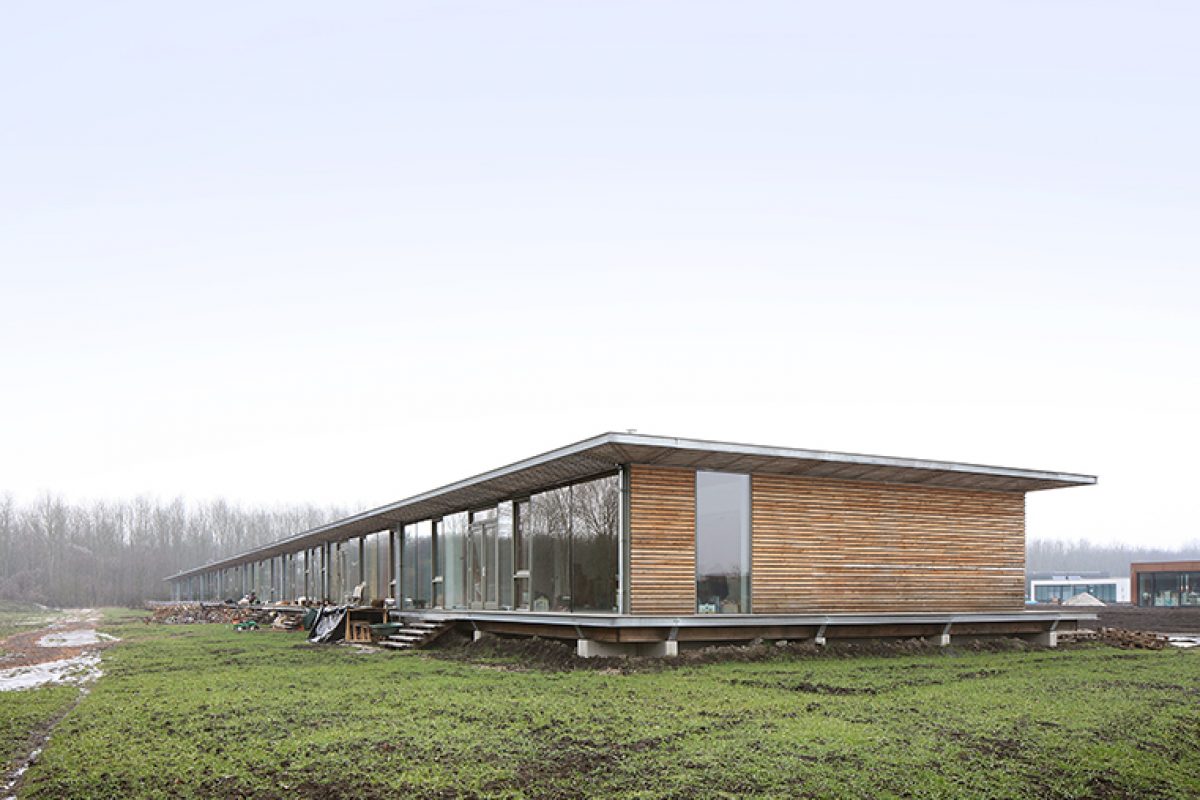Bureau SLA and ZakenMaker designed the Oosterwold Co-living Complex. The challenge of a group of pioneers

Bureau SLA and ZakenMaker designed 9 homes for a group of pioneers wishing to turn a potato field into a community. An award-winning project, among others, as the best Co-living Complex of the Year in the 2019 Frame Awards. Photo credit: Filip Dujardin
Photo credit: Filip Dujardin
In the rural area of Oosterwold Almere, Frode Bolhuis dreamed of an alternative way of living and working. He wanted to make a one-hectare potato field his home and asked architects Peter van Assche and Mathijs Cremers at bureau SLA and ZakenMaker respectively to design his dream house. The very limited budget was a major issue. Photo credit: Filip Dujardin
Photo credit: Filip Dujardin
The architects came up with two preconditions to make the project possible: they suggested finding like-minded people to join the project, since it is a lot cheaper to build several houses at the same time. Luckily, Frode was able to find eight friends who shared his dream. The second precondition was that only the exterior would be designed, allowing the families complete freedom to decide on the interior. Photo credit: Filip Dujardin
Photo credit: Filip Dujardin  Photo credit: Filip Dujardin
Photo credit: Filip Dujardin
The result is a convincing piece of architecture. The 100-meter-long building makes a statement in the landscape, and at the same time accommodates nine completely different.
All the families were allocated 160 square metres to be divided into living space. This allowed them to meet their own needs, by incorporating an artist's studio, for example, or a large living room. The architects decided to raise the long building from the ground so that it seems to float above the land. This design decision also had another advantage. It allowed the residents to choose where the sewage system and water pipes would be located. Photo credit: Filip Dujardin
Photo credit: Filip Dujardin
To achieve high-end insulation within the budget, the architects chose to get the most out of common building materials. Floor, roof and adjoining walls were built as hollow wooden cassettes, which are blown in with insulating cellulose was pumped on completion. The result is an exceptionally well-insulated basis.
The façade is designed to give maximum freedom of choice within an efficient building system. Each family received a plan for seven windows and doors, which can be placed in the façade. The space between the frames is vitrified with solid parts of glass without a frame. This creates an uncluttered but diverse façade. Photo credit: Filip Dujardin
Photo credit: Filip Dujardin  Photo credit: Filip Dujardin
Photo credit: Filip Dujardin
Oosterwold Co-living Complex demonstrates that it's possible to achieve a convincing design within a tight budget and which, most importantly, manages to meet the expectations of nine different clients.
The position of the building on the side of the plot leaves maximum space for a community garden. And the long, communal porch makes it easy to make contact with the neighbours.
In the end, the tight budget, which first seemed to be an issue, became a key feature of the project. Completing the interiors of the homes has strengthened the bond within the community. After all the hard work, in the summer after completion, in the lee of the surrounding forest edge, one meter above ground level, the residents look out over their shared landscape and vegetable garden. Photo credit: Filip Dujardin
Photo credit: Filip Dujardin  Photo credit: Filip Dujardin
Photo credit: Filip Dujardin
Oosterwold Co-living Complex is the winner of the Frame Awards 2019, in the category Co-living Complex of the Year, and was rewarded with an honourable mention from the Architecture Prize Almere. This housing project was published in the Dutch Architecture Yearbook 2016/2017.
Source: V2Com
Top image: Filip Dujardin
News Infurma:
Online Magazine of the International Habitat Portal. Design, Contract, Interior Design, Furniture, Lighting and Decoration
